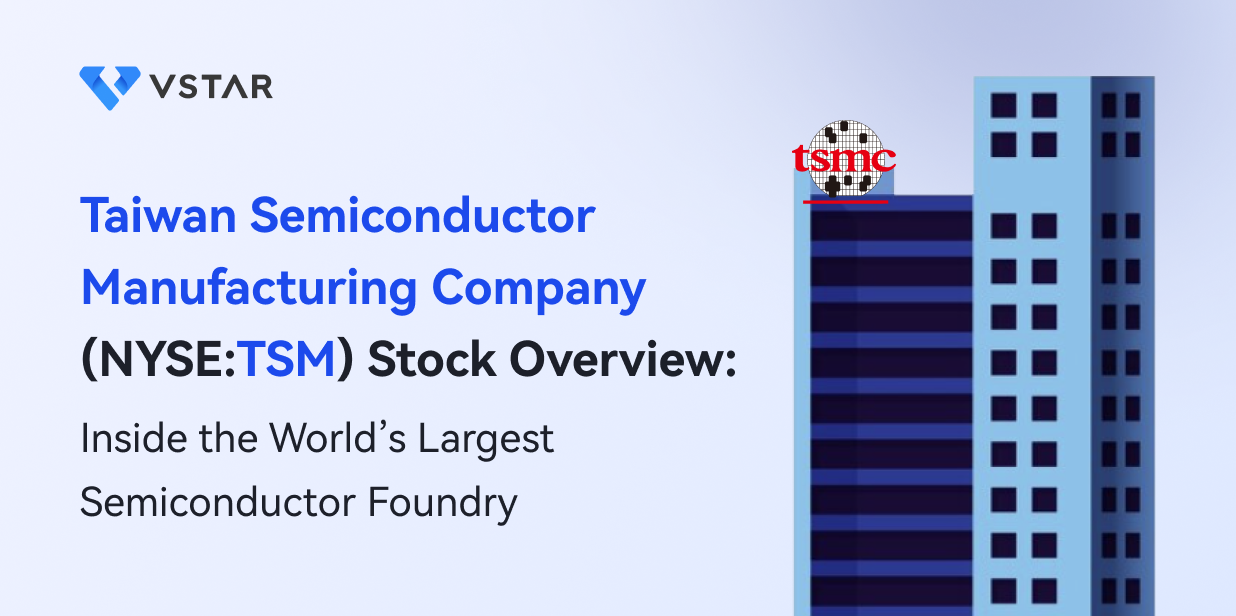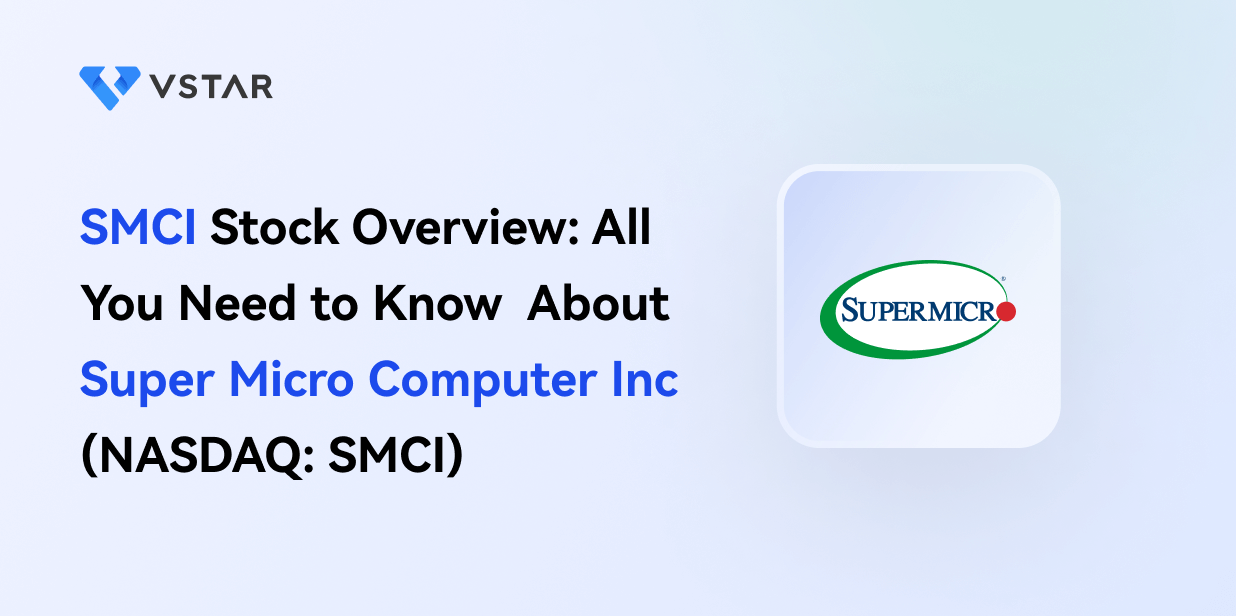Taiwan Semiconductor Manufacturing Company (NYSE:TSM) shares fell recently after famous billionaire investor Warren Buffett disclosed exiting his stake in the chip stock at the end of the first quarter. Interestingly, as Buffett quit TSM stock, other top investors moved in to buy TSM shares.
These events have left many investors trying to figure out TSM stock outlook. The question in the mind of investors is whether TSM stock is a buy or sell. And for that reason, TSM stock forecast is in sharp focus.
If you’re curious about TSM stock price prediction, this article explores TSM stock outlook. The article takes you behind Taiwan Semiconductor Manufacturing Company’s business model, financial performance, and market situation to help you decide if TSM stock is a good investment.
Moreover, you’ll learn about TSM stock dividend history and yield, and TSM stock price target. Finally, you’ll find out how you can make money with TSM stock.
Taiwan Semiconductor Manufacturing Company Overview
Taiwan Semiconductor Manufacturing Company, or TSMC for short, manufactures semiconductor chips on contracts. As a result of the contract nature of its business where it produces chips on behalf of other companies, TSMC is popularly referred to as a chip foundry.
Founded in 1987, TSMC is based in Taiwan where it runs most of its operations. The company builds chips used in personal computers, smartphones, cars, and other equipment, devices, and gadgets.
TSMC founder Morris Chang studied mechanical engineering at the Massachusetts Institute of Technology. Chang worked for Texas Instruments (NASDAQ:TXN) before founding TSMC. In 2018, Chang retired from active duty at TSMC, leaving the company in the hands of CEO C.C. Wei and chairman Mark Liu.
TSMC has achieved many milestones in its history, including being the world’s first pure chip foundry. The company has grown to become the largest chip manufacturer by market share. The company’s other major achievement is being the first foundry to produce 7-nanometre and 5-nanometre chips.
TSM stock is dual listed in Taiwan and the U.S. The chipmaker has a market capitalization above $430 billion.
Why Did Warren Buffett Sell TSM Stock?
In November 2022, Warren Buffett’s Berkshire Hathaway disclosed a stake of 60 million shares worth $4.1 billion in TSM stock. But it turned out to be a brief position as Buffett decided to exit the stake in TSM stock at the end of the first quarter of 2023.
TSM stock soared on the news of Buffett’s investment and dipped on the news of his exit from the stock. Buffett dumped TSM stock not because he believes that TSMC’s business is broken, but because of concerns over the company’s location.
Tensions of China-Taiwan could have devastating effects on TSMC’s business and that is what worries Buffett. If not for the risk associated with TSMC’s location, Buffett believes TSM stock is a good investment. In fact, Buffett has described TSMC as one of the best-managed companies in the world.
Indeed, top investors like Macquarie and Tiger Global seem to see things differently as they moved to buy TSM stock just as Buffett pulled out.
TSM’s Business Model and Products
TSMC operates a third-party chip manufacturing business. It takes orders from customers to produce semiconductor components on their behalf at its factories. TSMC customers include Apple (AAPL), Broadcom (AVGO), Qualcomm (QCOM), Nvidia (NVDA), Advanced Micro Devices (NASDAQ:AMD), and MediaTek.
While TSMC primarily serves fabless chip companies, it also gets outsourced chip manufacturing orders from companies like Intel, Texas Instruments, and NXP Semiconductors (NASDAQ:NXPI), and STMicroelectronics (NYSE:STM).
In terms of products, TSMC manufactures chips that go into personal computers, smartphones, cars, gaming consoles, and a broad array of industrial and consumer devices.
TSMC boasts the most advanced chip manufacturing technology in the market. For example, most of its chip production currently uses 7nm and 5nm process technology. The company is gearing up to start churning out 3nm chips in 2023 and advance to 2nm chips in 2025.
TSM’s Financial Performance
Revenue Growth
TSM’s revenue rose 42.6% to 2.26 trillion Taiwan dollars (US$76 billion) in 2022. The company has recorded double-digit revenue growth in each of the past three years. Revenue increased nearly 19% in 2021 and 25% in 2020.
TSM’s revenue has increased at a compound annual growth rate of 17% in the past 5 years. The company’s revenue jumped nearly 4% in the first quarter of 2023. The chart below illustrates TSM’s annual revenue trend.
Profit Margins
TSM achieved an impressive gross margin of 59.6% in 2022, which improved from 51.6% in 2021. The operating margin for the year was 49.5%, also better than 40.9% in the previous year. In the latest quarter, gross margin was 56.3%, operating margin was 45.5%, and net profit margin was 40.7%.
Cash Position and Balance Sheet Condition
If cash is the lifeblood of a business, TSMC has plenty of life. The company ended the latest quarter with a cash balance of $45 billion. The company has a solid balance sheet with $160 billion in assets and only $28 billion in long-term debt.
TSM Stock Performance
TSM stock was listed in Taiwan in 1993. In 1997, the stock was listed in the US on the NYSE where it trades under the “TSM” ticker symbol.
TSM stock ranks among the best-performing chip manufacturing stocks in 2023. With year-to-date gains of more than 23%, TSM stock is outperforming rival chip stocks such as STMicroelectronics, NXP Semiconductors (NASDAQ:NXPI), Intel Corporation (NASDAQ:INTC), and GlobalFoundries (NASDAQ:GFS).
Moreover, TSM shares also boast stellar long-term performance. As you can see in the chart below, TSM stock price has climbed nearly 140% over the past 5 years. In contrast, Intel stock price has dropped 45% in the same period.
Earning results, semiconductor industry demand trends, competitor actions, and changes in the major portfolios with TSMC shares are some of the factors that impact TSM stock price.
TSM Stock Splits
The chip stock has undergone 10 splits since the IPO. The first TSM stock split occurred in August 1998 at the rate of 145 for 100. The last TSM stock split occurred in July 2009 at the rate of 1,005 for 1,000.
Following the series of TSM stock splits, a position of 1,000 shares in the chip company has increased to more than 4,700 shares.
TSM Stock Dividend History
The semiconductor giant started distributing dividends to shareholders of its US-listed TSM stock in 1997. Initially, the company only distributed dividends once a year. It introduced a quarterly dividend schedule in 2019. The company paid an annualized dividend of about $1.80 per share in 2022. It declared the first quarter 2023 dividend per share of $0.46.
TSM stock currently offers a dividend yield of 1.7%, which beats the sector average of 1%. With a conservative dividend payout ratio of about 28%, huge free cash flow, and consistent profit, TSM’s dividend program looks sustainable for the foreseeable future.
TSM Stock Price Prediction
Wall Street analysts have a 12-month price target of about $119 on TSM stock, which implies over 30% upside potential. The stock’s peak price target of $126 suggests over 40% upside.
TSM stock trades at 2023 forward PE of 17.65, compared to 68.71 for Intel, 25.86 for GlobalFoundries, and 22 for Texas Instruments.
TSM’s Risks and Opportunities
The semiconductor market is huge and market. While there exist plenty of opportunities for TSMC, risks are also lurking around. The company’s success depends on making the most of the opportunities in the industry while navigating various hurdles.
Challenges Facing TSM
TSMC has dominated the foundry chip manufacturing space with about 60% market share. But that doesn’t mean the company is clear of all headaches. These are some of the challenges that the chipmaking giant faces:
Increasing Competition
As the chip foundry market leader, TSM is the prime target of competition. The company’s success has come from its large manufacturing scale and advanced technology. But rivals Samsung and Intel are closing gaps on these fronts. For example, Samsung is investing heavily in its chip business and hopes to surpass TSMC in chip production process technology within 5 years.
Intel is also working to chip away TSM’s foundry market share. Intel initially only produced its own chips, but it has expanded into contract manufacturing to compete with TSMC.
Geopolitical Issues
China-Taiwan tensions have been rising with many fearing that a Russia-Ukraine-type war could break out. A war could have a significant adverse impact on TSM’s business considering that most of its manufacturing operations are in Taiwan. To mitigate against this risk, TSM is moving swiftly to diversify its manufacturing footprint. The company is opening up new factories overseas in places like Japan, the US, and Germany.
Manufacturing Outside Taiwan Is More Expensive
Although TSM is diversifying its manufacturing base to reduce the risk that caused Buffett to dump the stock, it faces high hurdles in that effort. As it builds out factories overseas, TSM is realizing that construction, labor, and other costs are more expensive outside Taiwan.
For example, the company estimates that manufacturing chips in the US is nearly 50% more expansive than in Taiwan. As a result, the company will have to ensure profit margin squeeze as it expands its overseas manufacturing.
High Customer Concentration
Although TSMC serves a diverse base of industries from smartphones to gaming consoles to automotive, the company is heavily dependent on a single customer. TSMC builds the chips that power Apple’s iPhones and other devices.
As a result, Apple has grown to become its largest customer, accounting for more than 25% of its annual revenue. Such customer concentration makes TSMC vulnerable in several ways.
First, a slowdown in demand for the iPhone and other Apple products could weigh heavily on the chipmaker’s financial results. Additionally, the fear of losing Apple’s important business could force TSMC to accept unfavorable terms in its dealings with the blue-chip customer.
Seasonal Demand
While chip manufacturing business may be lucrative, chip demand is seasonal. There are times when demand is strong, and other times demand is weak. For example, demand for chips can be strong when new models of smartphone, laptop, and gaming devices are hitting the market.
Considering its large manufacturing capacity and high fixed costs, TSM’s profit margins can come under pressure during slow chip demand.
Carbon Footprint
Chip manufacturing is an energy-intensive process. Consequently, TSMC emits huge amounts of carbon because of its massive manufacturing operation. Amid climate change concerns, companies across the board are under pressure to reduce their carbon footprint and TSM is no exception.
The increasing focus on carbon emissions among customers, banks, and investors presents several challenges for TSMC. For example, the company could lose customers or struggle to secure financing if its efforts to clean up its carbon footprint fall below expectations.
To reduce its environmental impact, TSM is working to shift to 100% renewable energy by 2050. That energy shift requires heavy investments that could crimp the company’s profit and divert funds from other crucial programs such as research and development.
TSM’s Competitive Advantages
Although TSMC faces many challenges, it also boasts many competitive advantages. These are some of the chip manufacturing giant’s advantages:
● Economies of scale: TSM is the largest semiconductor manufacturing capacity of any chip foundry in the world. This enables the company to fill large orders quickly, which explains why it’s the go-to chip foundry for large customers like Apple. As a result, TSM enjoys significant economies of scale.
● High barriers to entry for competitors: The chip foundry business is capital intensive. Moreover, the operation requires highly specialized skills that aren’t available everywhere. As a result, the industry poses high barriers to entry for newcomers. Therefore, it’s hard for competitors to come and disrupt the scene for TSM.
● Advanced process technology: TSM leads the foundry industry with the most advanced manufacturing process technology. As it prepares for the rollout of 3nm and 2nm chips, TSM has pulled several generations ahead of rivals Samsung and Intel. That gives it a clear advantage in the race to fill orders for advanced chips needed for things like artificial intelligence (AI) applications.
TSM’s Future Growth and Expansion Opportunities
The rise of AI-powered systems and Internet of Things (IoT) are fueling demand for semiconductor components. In the AI space, tiny but power-efficient chips are needed to support functions such as training of computer systems and automating processes. In the IoT space, for instance, semiconductor chips are increasingly being used in cars, medical devices, military hardware, and industrial equipment.
The increasing demand for chips means growing business opportunity for semiconductor foundry companies like TSMC. Indeed, the revenue opportunity ahead is enormous. The global chip foundry market is forecast to grow to $112.9 billion by 2028, from $77.8 billion in 2022.
How to Make Money With TSM Stock
You can make money with TSM stock in several ways, depending on the size of your capital and the strategy you fancy. These are the three main ways you can get exposure to TSM stock:
Buying and Holding TSM Shares
If you have a long investment timeline, buying and holding TSM shares in your portfolio may be the best strategy for you. Let’s say you purchased 100 TSM shares at $90 apiece, investing $9,000 in the stock. If TSM stock price goes up to $100 and you decide to sell your shares, your investment would turn up a profit of $1,000.
A major downside of the buy-and-hold investing strategy is that you only bet on the stock price going up. As a result, you would lose money if TSM stock price declines. This investing strategy also requires a large starting capital. But the advantage you have is that you’re eligible for dividend distributions.
Trading TSM Stock Options
You can also get exposure to TSM stock through options. A stock option is an arrangement that allows you to buy or sell shares of a stock at a preset price in the future.
Let's say TSM stock price is $90 currently and you expect it to go up to $100 in a few weeks or months, but you’re now ready to purchase the shares immediately. In that case, you can purchase a call option that allows you to buy TSM stock at $90 in the future. That would afford you a discount entry into the stock if you decide to open a long position. Alternatively, you can turn around and sell your shares at the new market price to make a quick profit.
If you expect TSM stock price to decline from $90, you can purchase a put option that allows you to sell the stock at the current price in the future. In that case, you can sell your shares at a profit even in a down market.
In options trading, there’s a premium fee that can be $3 per share. In that case, you would need to put down $300 just to enter into the option since an option contract offers a package of 100 shares. You forfeit the premium if you fail to exercise your option.
Trading TSM Stock CFD
Another way you can make money with TSM stock is through CFD trading. With this strategy, you only bet on the direction of TSM stock price movements. CFD trading is for short-term profits. Therefore, a CFD trade can last only minutes, hours, or days. Your profit is determined by the degree of the price change and the number of contracts purchased.
If you expect TSM stock price to rise, you would enter a CFD trade that pays you the price increase. Let's say you bought 100 TSM stock CFD contracts and the stock price increased by $10 in a week. In that case, your profit would be $1,000.
Because CFD trading is all about the change in price, you can make money with this strategy both when the stock price is going up and when it’s going down. Therefore, CFD trading is the best strategy to make money from short-term fluctuations in TSM stock price. Moreover, CFD trading requires a smaller starting capital than trading options or buying and holding shares.
Why Trade TSM Stock CFD With VSTAR
If CFD trading feels like the right strategy for you to make money with TSM stock, consider using VSTAR – a regulated CFD trading platform.
VSTAR offers tight spreads to reduce your trading costs. Moreover, VSTAR offer superfast order execution, ensuring you don’t miss a great opportunity. VSTAR also offers leverage to help you start trading with little money and still maximize your profit.
If you’re new to CFD trading, you can learn how to trade stock CFD with VSTAR’s demo account that offers up to $100,000 in free virtual money.
Consider opening a VSTAR CFD trading account today to start make money with TSM stock.
Final Thoughts
Although chip manufacturing giant TSMC boasts strong fundamentals, it also faces many challenges. Particularly, the rising Taiwan-China tensions can be a major cause for concern for long-term investors. But those looking to tap profit from short-term fluctuations in TSM stock price such as through CFD trading have little to worry about the geopolitical issues.




